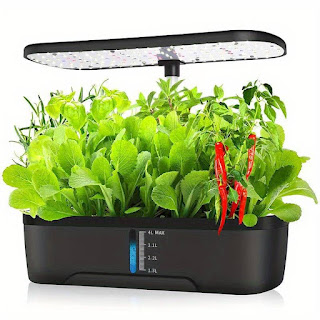Introduction: Getting into hydroponic farming can be a rewarding venture, allowing you to grow crops efficiently and in a controlled environment. Here's a 12 step guide to help you get started with hydroponic farming:
1. Educate Yourself:
Before diving in, take the time to learn about hydroponics. Understand the different systems (e.g., deep water culture, nutrient film technique, aeroponics) and the principles behind them. There are numerous online resources, books, and courses that can provide valuable insights.
2. Start Small:
Begin with a small-scale setup to gain hands-on experience without overwhelming yourself. This could involve setting up a small hydroponic system for a few plants. Learn about the specific needs of the crops you're interested in cultivating.
3. Choose Your Crops:
Different crops have varying requirements, and some are better suited for hydroponic systems than others. Herbs, lettuce, tomatoes, and strawberries are common in hydroponic setups. Consider factors like growth cycle, nutritional needs, and compatibility with hydroponic systems when selecting crops.
4. Select a Hydroponic System:
Choose a hydroponic system based on your space, budget, and the crops you plan to grow. Common systems include deep water culture, nutrient film technique, drip systems, and aeroponics. Each system has its advantages and considerations, so pick one that aligns with your goals.
5. Gather Necessary Equipment:
Acquire the essential equipment, including containers, growing medium, nutrient solutions, pH testing kit, pumps, and lighting (if growing indoors). Ensure that your chosen system and equipment are properly sized for the scale of your hydroponic farm.
6. Set Up Your System:
Follow guidelines and instructions to set up your hydroponic system. Pay attention to factors such as pH levels, nutrient concentrations, and water quality. Proper installation is crucial for the success of your hydroponic farm.
7. Monitor and Adjust:
Regularly monitor the environmental conditions, nutrient levels, and overall health of your plants. Be prepared to make adjustments based on observations. Understanding how to manage pH levels, nutrient concentrations, and water quality is essential for a thriving hydroponic farm.
8. Experiment and Learn:
Hydroponic farming involves a degree of experimentation. Keep detailed records of your practices, take note of what works well, and be open to refining your approach based on experience.
9. Join Hydroponic Communities:
Connect with other hydroponic farmers, either locally or online. Participate in forums, attend workshops, and seek advice from experienced growers. Learning from others can provide valuable insights and troubleshooting tips.
10. Consider Sustainability:
Explore sustainable practices within hydroponic farming, such as recycling nutrient solutions, using energy-efficient lighting, and implementing water-saving techniques. This not only benefits the environment but can also contribute to the long-term viability of your hydroponic farm.
11. Comply with Regulations:
Be aware of any local regulations or permits required for hydroponic farming. Some areas may have specific guidelines for water usage, nutrient disposal, or building structures for hydroponic systems.
12. Scale Up as Needed:
Summary: Remember, hydroponic farming requires ongoing attention and a willingness to adapt. By starting small, learning continuously, and staying connected with the hydroponic community, you can build a successful and sustainable hydroponic farm.



No comments:
Post a Comment